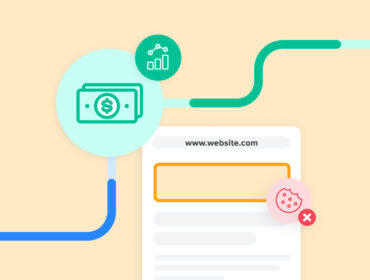Real Time Banter: The New York Times’ path to a first-party future
In this Real Time Banter webinar, LiveIntent SVP of global marketing, Kerel Cooper, and VP of marketing, Nick Dujnic, speak with Jay Glogovsky, senior director of revenue analytics and operations at The New York Times, about the path to a first-party future.
Insights from Jay Glogovsky
In May, The New York Times announced that they would be phasing out third-party advertising data and launching a proprietary, first-party data platform.
“It didn’t happen overnight,” Glogovsky said. “We realized about two years ago that we were sitting on a huge amount of data that can be privacy-safe and transparent for our users. So we quickly launched our first data products and built a team internally to build those products out.”
One of those products helps advertisers target readers based on the emotions they’re going to feel when reading content.
“We asked readers to tell us how they felt as they read a handful of articles. We launched with 150,000 unique inputs that we built a model off of. We can now target similar content and have a really good understanding of how people are going to react to it.”
Beginning in July, the publisher is also offering up 45 new, first-party audience segments for ad targeting. Those segments are broken down into categories of age, income, business, demographic, and interests.
“I think it’s important to say we didn’t make this decision internally. We actually surveyed our readers online and asked if they would be willing to tell us about themselves for a better ad experience. The results were very positive.”
Glogovsky believes this commitment to gathering audience input can be a major differentiator for The New York Times.
“We don’t want to start with making assumptions about who our readers are. Having that foundational data based on voluntary responses will then make our models, which are obviously needed, more accurate than third-party ones, and ultimately produce better results.”
Still, Glogovsky knows there are challenges that come along with switching to first-party data. Namely, the ability to scale.
“The ability to scale and sell audiences around first-party data is a proven model, but it’s only proven at the platform level. Facebook is doing this and Google is doing this, and they are taking everyone’s share. From a publisher side, it’s going to be highly fragmented. Because of that, I do think we’ll have challenges around speaking the same language and trying to differentiate ourselves from each other and those platforms.”
The good news is that Glogovsky hasn’t seen the first-party approach affect scale in a negative way.
“How can the audience be the same size? It was the easiest answer that I completely forgot about: We now can target those people on Safari. So that’s been really, really helpful for us. And because that scale is quite big, we don’t have that frequency challenge or concern as much as we initially had.”
Despite inevitable challenges along the way, The New York Times has ambitious goals going forward. They’re going to add 30 new interest-based audience segments in the second half of 2020. And they hope to increase from 5 million to 10 million subscribers by 2025.
“We are well on our way there. We’ve had really great subscription growth, which we saw in Q1. And we expect that as our subscribers and daily readers grow, they’ll continue to provide more information about themselves and help us create better products and capabilities for our advertisers.”
Eventually, they’ll phase out third-party data altogether.
“The goal over the next 12–18 months is to have an audience product that is comparable to, and better than, our third-party offering today. That’s a lot of work, but we think we’ll ultimately be able to wean ourselves off of third-party ad targeting completely.”
Best practices for building a first-party data strategy
- Recognize the need for first-party data. “When I joined The Times three years ago, I remember hearing from everyone in the industry about the data that they had. We were really harnessing that data.”
- Take inventory of data you already have. “Ensure that it’s quality, accurate, and productizable.”
- Create a reasonable timeline. “Be realistic on what kind of work it’s going to require and how many resources you’re going to need. And whatever timeline you put onto it, add a 30–50% buffer on top of that, because it is complicated and a lot of work.”
- Commit to this new venture. “If you have data and it’s worth the effort, you have to commit. You can’t take a one-foot-in-one-foot-out approach.”
Enjoyed this episode and want to stay up-to-date on all things MarTech? Subscribe to the LiveIntent Newsletter.


